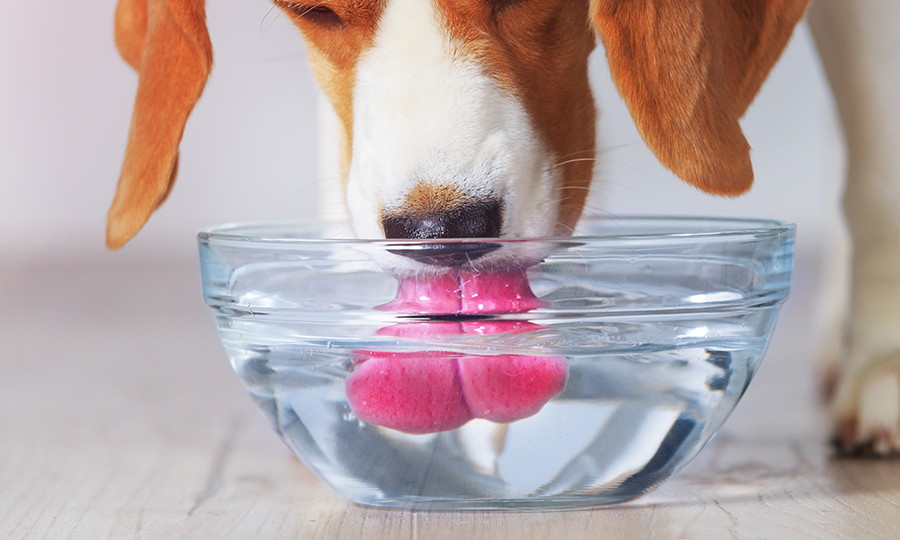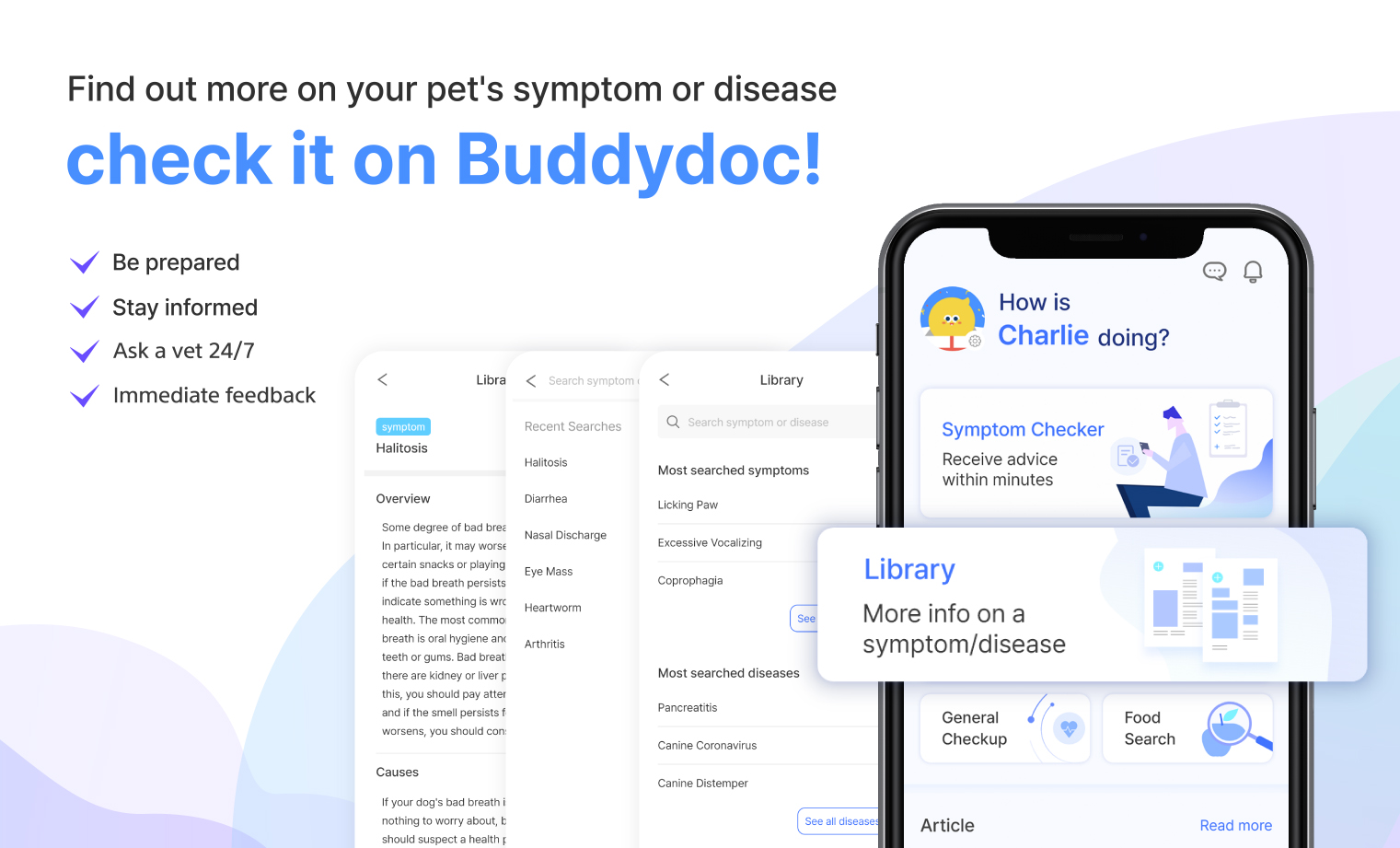DISEASES
Diabetes Insipidus (DI) in Dogs - Symptoms and Treatments
페이지 정보
본문


What is the difference between diabetes insipidus and diabetes mellitus?
There are two types of diabetes in dogs, diabetes insipidus and the more commonly known type, diabetes mellitus. Diabetes mellitus refers to a dog’s abnormal regulation of its blood sugar levels. On the other hand, diabetes insipidus is rarer and pertains to the body’s inability to produce enough antidiuretic hormone (ADH), or when the kidneys are unable to use ADH effectively in the body. The primary symptom of diabetes insipidus is an increase in urination, which leads to excessive thirst and the production of large amounts of diluted urine.
Diabetes insipidus and diabetes mellitus both sound familiar and cause polyuria but are fairly different in characteristics. Diabetes insipidus is caused by problems regulating the body’s fluids, while diabetes mellitus is caused by issues controlling the body’s blood sugar levels.
Causes of diabetes insipidus in dogs
One of the main functions of the kidneys is to maintain body fluid balance by filtering waste and any extra fluids from the body. Diabetes insipidus is an uncommon condition in which a dog’s kidneys are unable to maintain that balance of the fluids in its body. An adequate level of an antidiuretic hormone called ADH is required for efficient reabsorption of fluids. Therefore, diabetes insipidus can be divided into two types: central diabetes insipidus, in which ADH is not properly produced in the brain, and nephrogenic diabetes insipidus, which is caused by renal resistance because ADH is produced but is not properly utilized in the kidney.
-
Central diabetes insipidus (CDI)
Central diabetes insipidus occurs when the hypothalamus or pituitary gland fails to secrete ADH properly due to trauma, tumors, birth defects, or idiopathic causes. The hypothalamus is part of the brain that produces ADH, while the pituitary gland stores and secretes it.
-
Nephrogenic diabetes insipidus (NDI)
In renal diabetes insipidus, antidiuretic hormone (ADH) is normally present in sufficient amounts, but the kidneys do not properly use it. The kidneys' response to ADH may be impaired due to drug side effects, illness (such as serious infections, metabolic disorders, or kidney disease), or birth defects.
Common symptoms in dogs with diabetes insipidus
The main symptom of diabetes insipidus is polyuria, which refers to a large production of diluted urine. This occurs because the hormone ADH is either not produced in sufficient quantities or not utilized properly by the kidneys, leading to the excretion of urine without sufficiently absorbing the water.
Other symptoms that can result from diabetes insipidus include:
-
Canine Enteric Coronavirus (CECoV)
You may notice this symptom when your dog drinks water from places other than where they normally drink water. (toilet, sink, standing water, etc.).
-
Dehydration
-
Urinary incontinence (leaky bladder)
-
Decreased appetite (begin to appear anorexic in some cases)
-
Weight loss

In the case of central diabetes insipidus (CDI) in dogs, neurological symptoms may appear as well, such as:
- Dull behavior and appearance
- Disoriented
- Poor muscle control and appearing clumsy
- Seizures
When to see a vet for diabetes insipidus (DI) in dogs
Polyuria is considered the main symptom of diabetes insipidus that require specialized treatment, as well as several other diseases such as diabetes mellitus, kidney disease, and Cushing’s disease. Healthy dogs drink about 1 ounce of water per pound of body weight per day. For instance, a healthy 10-pound dog should drink about 2/3 of a 16oz water bottle of water per day. Your dog may drink less than that if they are on wet food or homemade diet, but if they consume upwards or more than 2oz of water per pound of body weight per day and urinate more frequently than usual. You may suspect a health concern worth visiting the veterinarian hospital for examination.
Home treatment for diabetes insipidus in dogs
When a dog's urine volume increases, parents may think that it is because they drank too much water and therefore restrict their access to drinking water. However, in most cases, excess urine can indicate that they are not absorbing the fluids properly. So it is important to ensure that your dog has enough fresh water to drink in order to replenish their fluids.
If your dog stops drinking water, they may become severely dehydrated as their urine will not have enough water to excrete. If polyuria (frequent urination) is apparent, it is important to seek medical attention at the vet for an accurate diagnosis and appropriate treatment.
Diagnosing diabetes insipidus (DI) in dogs?
Diabetes insipidus is an uncommon disease that is characterized by the symptom of polyuria. However, this symptom is often related to other diseases as described above such as diabetes, Cushing’s disease, kidney disease, and liver disease. Therefore, when diagnosing this condition, a veterinarian will consider the possibility of other causes and ask the owner a number of questions to guide their examination.
Questions your veterinarian may ask include:
- When did the symptom of polyuria begin?
- How much more water does your dog drink than usual?
- How often does your dog urinate and approximately how much is produced each time?
- Has your dog soiled any part of the house other than the usual place for urination?
- Are there any other abnormal symptoms you have noticed?
Using the answers you provide, a veterinarian will then make a more accurate diagnosis with one or more of the following tests:
-
Physical examination
A general physical examination is conducted to inspect the dog’s heart rate, respiration rate, hydration status, and neutralization.
-
Basic blood tests
The overall condition of the body is evaluated through a complete blood count (CBC) and the evaluation of kidney and liver function. Serum chemistry is also used to check blood sugar levels and levels of electrolytes such as sodium, potassium, and calcium.
-
Urine test
A urine test is performed, as well as an evaluation of the specific gravity of the urine (USG, or urinary specific gravity). The USG is generally measured to be very low in cases of diabetes insipidus. A urine strip test is also used to check for other conditions such as diabetes mellitus and ketosis. If there is a suspicion of a urinary tract infection, an additional urine culture test may be performed.
-
Abdominal X-ray and ultrasound
Abdominal radiographs and ultrasounds are not utilized for the diagnosis of diabetes insipidus, but rather to eliminate other potential diseases that could cause polyuria. X-rays or ultrasounds are employed to assess the kidneys, adrenal glands, liver, and uterus to determine if there are any abnormalities in these organs.
-
Hormone test
Based on the results of the physical examination, basic blood tests, and urine tests, additional tests for hormonal disorders such as Cushing’s disease and hyperthyroidism may be necessary.
-
CT&MRI scans
A CT or MRI scan may be performed if a brain problem, such as a pituitary tumor, is suspected or if a more accurate anatomical evaluation of an intra-abdominal tumor is needed.
-
Water deprivation test
If it has been ruled out that other diseases could be causing polydipsia and polyuria, a fluid restriction test may be conducted to determine whether the cause is psychogenic polydipsia or diabetes insipidus. The test involves restricting the patient's intake of water for 12 hours and then checking the specific gravity of their urine. This test is typically conducted in a hospital setting for more accurate monitoring. However, it may not be possible to perform this test in cases of severe renal failure or dehydration, and it may need to be discontinued if the patient's physical condition worsens during the test.
-
Therapeutic trial
Suppose other diseases that cause polyuria symptoms have been ruled out and the likelihood of diabetes insipidus is high. In that case, it is important to differentiate between central diabetes insipidus (CDI) and nephrogenic diabetes insipidus (NDI). One way to do this is by testing the response to drug treatment, specifically by administering desmopressin, a synthetic ADH agent. If the patient has CDI, their response to this treatment will also be assessed.
Treatment for diabetes insipidus in dogs
Treatment for diabetes insipidus will depend on the specific cause identified during examinations.
-
Treatment of central diabetes insipidus
Central diabetes insipidus is treated with desmopressin, a synthetic form of antidiuretic hormone (ADH). It can be administered orally, as nasal drops, or via injections. Treatment with desmopressin is often effective, allowing individuals to maintain a normal lifestyle. However, if the condition is caused by a tumor or trauma to the pituitary gland, the prognosis may be poor, as desmopressin only relieves symptoms and does not address the underlying cause.
-
Treatment of nephrogenic diabetes insipidus
A veterinarian will determine the cause of nephropathy and treat the underlying cause accordingly. A low-sodium diet may be beneficial during the treatment process for dogs with NDI.
-
If, after consulting with your veterinarian, you may decide not to treat your dog’s diabetes insipidus, you should provide your dog with an environment where they have a constant supply of clean fresh water to prevent dehydration.
Prevention of diabetes insipidus in Dogs
Diabetes insipidus is not easy to prevent. However, if you notice that your dog is drinking more than 2oz of water per pound in their body weight per day, it is recommended that you consult a veterinarian as soon as possible for an early diagnosis and treatment.
Find out more about your dog’s symptoms and diseases on the Buddydoc app!

The Buddydoc library is filled with everything you’d want to know about each symptom and disease your pet may experience. If you would like to find out more about the causes, signs, treatments, preventions, and more for your dog’s disease. Try out the Buddydoc app and search your pet’s symptoms or diseases in the Buddydoc library.












